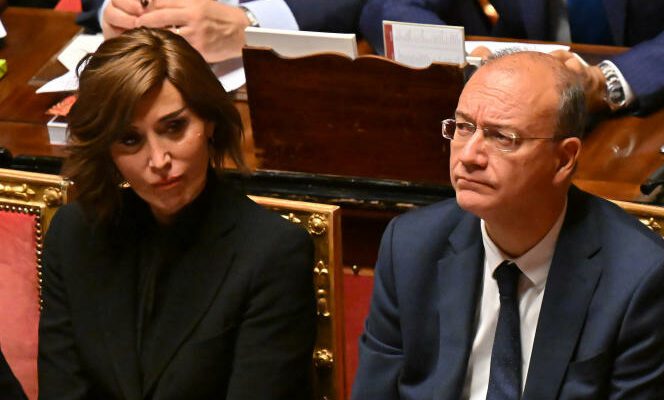Violent kicks and punches on two high school students on the ground filmed by smartphones. It was enough for the images to quickly become viral on social networks. Saturday, February 18, six young people attacked students at the exit of the Michelangiolo high school in Florence. An investigation was opened against them for aggravated violence. The case could have remained confined to miscellaneous facts, a few months ago. But the attackers, aged 16 to 21, have been identified as activists from Azione studentesca, a far-right group linked to the Fratelli d’Italia party, the political formation of the President of the Council, Giorgia Meloni. The attack led to a week of political tension in the Peninsula.
Four days after the beating, Annalisa Savino, principal of Leonard de Vinci high school, another Florentine establishment, wrote a letter to her students to come back to the facts and invite them to introspect. “Fascism in Italy was not born with large gatherings of thousands of people, she writes there. He was born on the edge of an ordinary sidewalk, the victim of a politically motivated attack being left to fend for herself by indifferent passers-by. » Mme Savino encourages high school students to “have faith in the future”, “always condemning violence and arrogance”.
This text earned him the disapproval of the Minister of Education and Merit, Giuseppe Valditara (League, far right), who, questioned on television, denounced “a completely inappropriate letter”. According to the minister, the headmistress exceeded her duties. “In Italy there is no violent and authoritarian drift, there is no fascist danger”he explained.
Call for an anti-fascist demonstration
The minister’s remarks quickly sparked controversy, with the opposition accusing him of not having condemned the attack. The mayor (Democratic Party, centre-left) of Florence, Dario Nardella, has asked for his resignation if he does not apologize. On February 22, an anti-fascist march brought together two thousand young people in the streets of the Tuscan capital. A sign of the tensions in the city, another group of far-right students, Blocco studentesco, burned the principal’s letter the same evening in front of the gates of his high school.
The arrival of the far right in power in September 2022 seems to have created a climate of turmoil in several Italian schools, high schools or universities, in particular when left or far left unions are represented there. On October 22, when Giorgia Meloni arrived at the Chamber to gain the confidence of the deputies there, a demonstration degenerated at the Sapienza University in Rome after anti-fascist students tried to prevent the holding of a congress organized with representatives of Fratelli d’Italia.
You have 16.11% of this article left to read. The following is for subscribers only.
